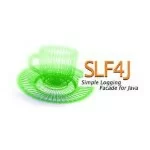JMX and Spring – Part 2
Hi, in my previous article I explained how to setup a JMX server through Spring and how to protect access to it through authentication and authorisation.
In this article I will show how to implement a simple MBean which allows users to change the level of a Log4j logger at runtime without the need to restart the application.
The Spring configuration has changed only slightly from my previous article to facilitate testing; the substance remains the same though.
The Spring configuration
01 02 03 04 05 06 07 08 09 10 11 12 13 14 15 16 17 18 19 20 21 22 23 24 25 26 27 28 29 30 31 32 33 34 35 36 37 38 39 40 41 42 43 44 45 46 47 48 49 50 51 52 53 54 55 56 57 58 59 60 | <?xml version="1.0" encoding="UTF-8"?><beans xmlns="http://www.springframework.org/schema/beans" xmlns:xsi="http://www.w3.org/2001/XMLSchema-instance" xmlns:context="http://www.springframework.org/schema/context" xsi:schemaLocation="http://www.springframework.org/schema/beans http://www.springframework.org/schema/beans/spring-beans-3.0.xsd http://www.springframework.org/schema/context http://www.springframework.org/schema/context/spring-context-3.0.xsd http://www.springframework.org/schema/util http://www.springframework.org/schema/util/spring-util-3.0.xsd"> <bean id="propertyConfigurer" class="org.springframework.beans.factory.config.PropertyPlaceholderConfigurer"> <property name="locations"> <list> <value>classpath:jemos-jmx.properties</value> <value>file:///${user.home}/.secure/jmxconnector-credentials.properties</value> </list> </property> </bean><!-- In order to automatically detect MBeans we need to recognise Spring beans --> <context:component-scan base-package="uk.co.jemos.experiments.jmx.mbeans" /><!-- This causes MBeans annotations to be recognised and MBeans to be registered with the JMX server --> <context:mbean-export default-domain="jemos.mbeans"/> <bean id="jemosJmxServer" class="org.springframework.jmx.support.ConnectorServerFactoryBean" depends-on="rmiRegistry"> <property name="objectName" value="connector:name=rmi" /> <property name="serviceUrl" value="service:jmx:rmi://localhost/jndi/rmi://localhost:${jemos.jmx.rmi.port}/jemosJmxConnector" /> <property name="environment"> <!-- the following is only valid when the sun jmx implementation is used --> <map> <entry key="jmx.remote.x.password.file" value="${user.home}/.secure/jmxremote.password" /> <entry key="jmx.remote.x.access.file" value="${user.home}/.secure/jmxremote.access" /> </map> </property> </bean> <bean id="rmiRegistry" class="org.springframework.remoting.rmi.RmiRegistryFactoryBean"> <property name="port" value="${jemos.jmx.rmi.port}" /> </bean><!-- Used for testing --> <bean id="clientConnector" class="org.springframework.jmx.support.MBeanServerConnectionFactoryBean" depends-on="jemosJmxServer"> <property name="serviceUrl" value="service:jmx:rmi://localhost/jndi/rmi://localhost:${jemos.jmx.rmi.port}/jemosJmxConnector"/> <property name="environment"> <map> <entry key="jmx.remote.credentials"> <bean factory-method="commaDelimitedListToStringArray"> <constructor-arg value="${jmx.username},${jmx.password}" /> </bean> </entry> </map> </property> </bean> </beans> |
The only part of the configuration which is of interest to us is the scanning of Spring components and the declaration of the MBean exporter (which causes also MBean annotations to be recognised and Spring beans to be registered with a JMX server as MBeans)
The LoggerConfigurator MBean
01 02 03 04 05 06 07 08 09 10 11 12 13 14 15 16 17 18 19 20 21 22 23 24 25 26 27 28 29 30 31 32 33 34 35 36 37 38 39 40 41 42 43 44 45 46 47 48 49 50 51 52 53 54 55 | package uk.co.jemos.experiments.jmx.mbeans;import org.apache.log4j.Level;import org.apache.log4j.Logger;import org.springframework.jmx.export.annotation.ManagedOperation;import org.springframework.jmx.export.annotation.ManagedOperationParameter;import org.springframework.jmx.export.annotation.ManagedOperationParameters;import org.springframework.jmx.export.annotation.ManagedResource;import org.springframework.stereotype.Component;/** * MBean which allows clients to change or retrieve the logging level for a * Log4j Logger at runtime. * * @author mtedone * */@Component@ManagedResource(objectName = LoggerConfigurator.MBEAN_NAME, //description = "Allows clients to set the Log4j Logger level at runtime")public class LoggerConfigurator { public static final String MBEAN_NAME = "jemos.mbeans:type=config,name=LoggingConfiguration"; @ManagedOperation(description = "Returns the Logger LEVEL for the given logger name") @ManagedOperationParameters({ @ManagedOperationParameter(description = "The Logger Name", name = "loggerName"), }) public String getLoggerLevel(String loggerName) { Logger logger = Logger.getLogger(loggerName); Level loggerLevel = logger.getLevel(); return loggerLevel == null ? "The logger " + loggerName + " has not level" : loggerLevel.toString(); } @ManagedOperation(description = "Set Logger Level") @ManagedOperationParameters({ @ManagedOperationParameter(description = "The Logger Name", name = "loggerName"), @ManagedOperationParameter(description = "The Level to which the Logger must be set", name = "loggerLevel") }) public void setLoggerLevel(String loggerName, String loggerLevel) { Logger thisLogger = Logger.getLogger(this.getClass()); thisLogger.setLevel(Level.INFO); Logger logger = Logger.getLogger(loggerName); logger.setLevel(Level.toLevel(loggerLevel, Level.INFO)); thisLogger.info("Set logger " + loggerName + " to level " + logger.getLevel()); }} |
Apart from Spring JMX annotations (in bold), this is a normal Spring bean. With those annotations however we have made an MBean of it and this bean will be registered with the JMX server at startup.
The @ManagedOperation and @ManagedOperationParameters annotations determine what gets displayed on the jconsole. One could omit these annotations, but the parameter names would not become something like p1 and p2, without giving any information on the type of parameter.
Invoking the function with, say, the value foo.bar.baz, INFO would result in the following output:
1 2 3 | ...snip2011-08-11 21:33:36 LoggerConfigurator [INFO] Set logger foo.bar.baz to level INFO |
In my next and last article for this series, I will show how to setup an MBean which alerts a listener when the HEAP memory threshold has been reached, as explained in one of my previous articles
Continue to Part 3.
Reference: JMX and Spring – Part 2 from our JCG partner Marco Tedone at the Marco Tedone’s blog blog.






